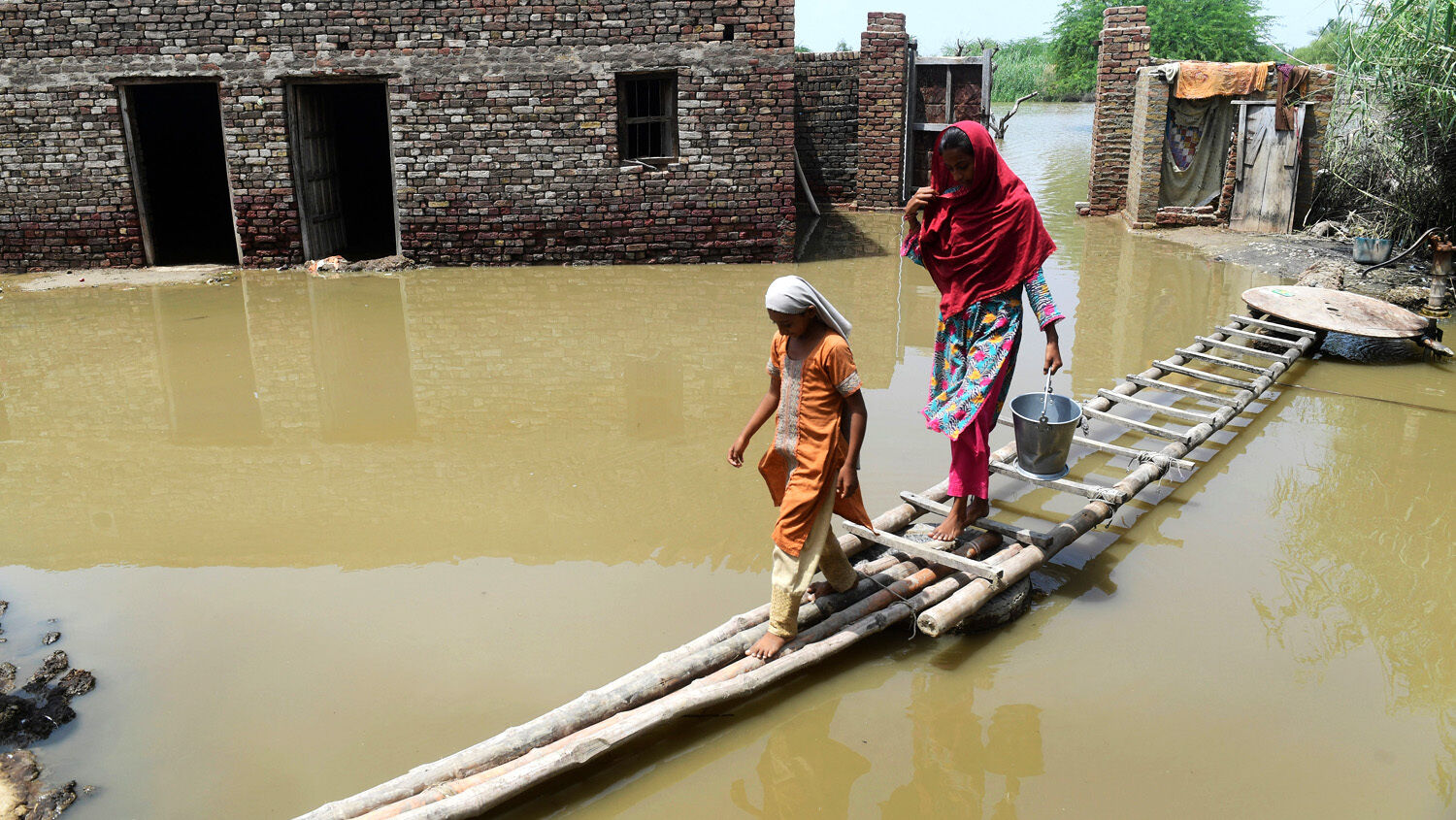
Pakistan Suffers From Flooding
Much of Pakistan seemed “like a sea,” Pakistani Prime Minister Shehbaz Sharif said on September 7, after the nation suffered weeks of monsoon rains 10 times heavier than normal. The Indus River—known to have higher levels during monsoon season—drowned a third of the nation, which affected some 33 million people. More than 1,340 Pakistanis have died, including at least 466 children.
“The situation … is absolutely chaos everywhere. People are on the roadside, waiting for humanitarian assistance, like water, food, shelter, and this is unprecedented in the history of Pakistan,” Islamic Relief Worldwide ceo Waseem Ahmad said on September 1. “In 22 years of my experience as [a] humanitarian aid worker, I never saw such destruction caused by floods.”
The devastating deluge is predicted to cost Pakistan about $10 billion. Two million acres of crops intended to sustain the nation over the winter have been washed away; 800,000 farm animals have died; over 100 bridges have collapsed or been submerged; roughly 1,864 miles of road are damaged.
https://twitter.com/INTELPSF/status/1563133167623876608
Pakistani authorities are still sending warnings to evacuate in some provinces. The damaged roads and bridges have left many people stranded. Rescue boats and helicopters are bringing aid and transporting people to safer ground. However, raging waters are preventing helicopters from landing.
In 2010, Pakistan experienced similar catastrophic floods. Twenty million people were affected, and 14 million Pakistanis were left homeless. An estimated 2,000 people died that year. It took months for those displaced to return home or find a new place to live. Many fear this year’s monsoon season will surpass 2010’s historical record.
In a February 2018 article titled “The Deadly Climate Change Deception,” Trumpet editor in chief Gerald Flurry wrote:
Massive climatic disasters are happening regularly. Evidence shows they are increasing in frequency and intensity. The usual political and media response is to blame this trend on “climate change.” The worse the disaster, the louder the calls for taking action against climate change by addressing the supposed man-made causes, such as carbon emissions and the use of fossil fuels.
This view about “climate change” has taken hold of millions of minds around the world. It is often presented as if it were irrefutable scientific fact. The truth, though, is that it is an ideology, and it will negatively affect every single person who falls for it!
I don’t want to discuss political views; my job is to give you God’s view. Our great Creator knows that climate change is not the cause of weather disasters!
Mr. Flurry explained that devastating weather events, such as what Pakistan is facing, are God’s attempt to get mankind’s attention and turn humanity to Him. Usually people look to their Maker only in times of crisis. God does not want mankind to suffer (Ezekiel 33:11), but all man’s problems result from sin (verse 10). Pakistan’s devastation shows the consequence of disobeying God.
As our free booklet Why ‘Natural’ Disasters? explains: “To recognize our own helplessness, unhappiness and inadequacy apart from God is the most fundamental lesson any of us can learn.” For more information on how God uses weather disasters to correct mankind, read “The Deadly Climate Change Deception” and request a free copy of Why ‘Natural’ Disasters?
